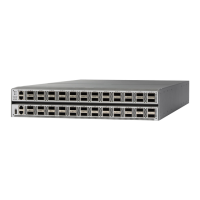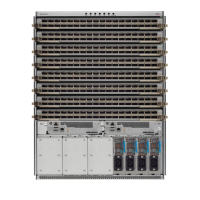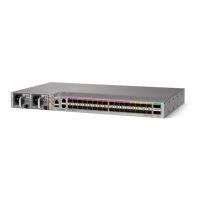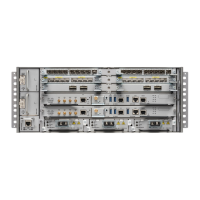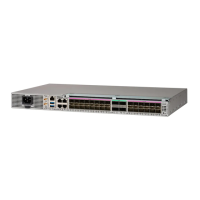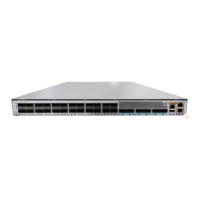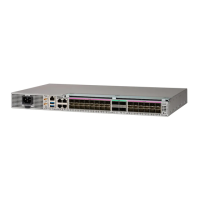Step 2 Disconnect and remove all interface cables from the ports; note the current connections of the cables to the ports on the
line card.
Step 3 Open the bail latch on the CFP2 module with your index finger. If the bail latch is obstructed and you cannot use your
index finger to open it, use a small flat-blade screwdriver or other long, narrow instrument to open the bail latch.
Step 4 Grasp the CFP2 module between your thumb and index finger and carefully remove it from the port.
Step 5 Place the removed CFP2 module on an antistatic mat, or immediately place it in a static shielding bag if you plan to return
it to the factory.
Connect Interface Ports
You can connect optical interface ports on line cards with other devices for network connectivity.
Connect a Fiber-Optic Port to the Network
Depending on the line card model that you are using, you can use either QSFP+ or QSFP28 transceivers.
Some transceivers work with fiber-optic cables that you attach to the transceivers and other transceivers work
with pre-attached copper cables. When installing fiber-optic cables for a port, you must install SFP transceivers
for 1-Gigabit optical ports or install SFP+ transceivers for 10-Gigabit optical ports or QSFP+ transceivers for
100-Gigabit ports before installing the fiber-optic cable in the transceivers.
Removing and installing a transceiver can shorten its useful life. Do not remove and insert transceivers any
more than is absolutely necessary. We recommended that you disconnect cables before installing or removing
transceivers to prevent damage to the cable or transceiver.
Caution
Disconnect Optical Ports from the Network
When you need to remove fiber-optic transceivers, you must first remove the fiber-optic cables from the
transceiver before you remove the transceiver from the port.
Maintain Transceivers and Optical Cables
Transceivers and fiber-optic cables must be kept clean and free of dust to maintain high signal accuracy and
to prevent damage to the connectors. Attenuation (loss of light) is increased by contamination and should be
below 0.35 dB.
Refer to Inspection and Cleaning Procedures for Fiber-Optic Connections document for inspection and cleaning
processes for fiber optic connections.
Hardware Installation Guide for Cisco NCS 5500 Series Modular Routers
92
Connect Router to the Network
Connect Interface Ports

